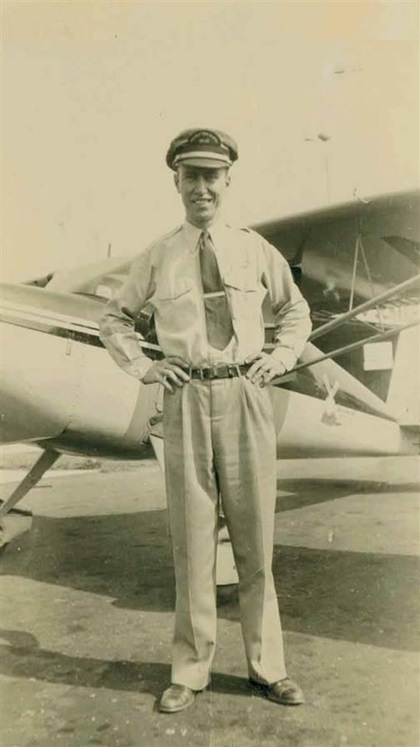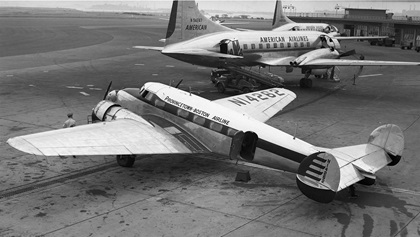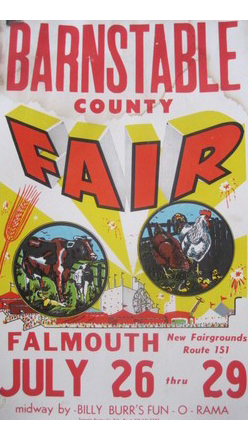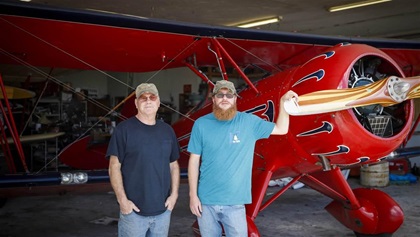Second chances
Chris Siderwicz gives life back to an airfield, several DC–3s, and his family
Cape Cod Airfield






On July 4, 1929, an airfield was born in Marstons Mills, Massachusetts (2B1). There were fireworks, airshow performances, and airport rides for the adventurous. “The Plains,” as the airfield land was called, was acres of farmland once cultivated by Native Americans. Crocker Snow was the first to envision the field as a playground of airplanes, polo grounds, and a car racetrack. After the Great Depression, Snow sold the property to William H. Danforth, a Boston stockbroker, and the Danforth family became the caretakers of this beautiful spot on Upper Cape Cod.
Horses and aeroplanes shared the property, and it must have been a grand time to be a wealthy Cape Codder, enjoying the beauty of the area and the leisure pursuits of the time. Danforth is said to have loved this property, which he leased to John Van Arsdale after World War II ended. Van Arsdale started the Cape Cod Flying Service here, teaching veterans to fly. The Van Arsdale name will be familiar to pilots of the era; he is the founder of the airline PBA (Provincetown-Boston Airlines), which became the largest commuter airline in in the United States. Van Arsdale flew his Piper Apache from the Mills airfield daily to Provincetown to run his fledging airline. He and wife Betty would leave the airfield each day at 7:30 a.m., arriving in Provincetown to work his airline and fly home each evening, regardless of weather.
The Danforths had hired Harry Kornhiser as their family pilot, and when Van Arsdale committed to running the Provincetown Airport, he left the Mills to Kornhiser. The airfield was open in the summer and closed in the winter when Kornhiser accompanied the Danforth family to their winter home in Miami. By the 1980s, Kornhiser and his son Rick were running the airfield, offering glider rides, flight instruction, and banner towing. The tourism boom on Cape Cod had airfield supporters concerned the land would be bought for development, but the Danforth family wanted the legacy to continue. They sold the land to the town of Barnstable with the stipulation that the 80 acres of airfield land (there was a total of 235 acres) would remain an airfield.
Tragedy struck when Rick Kornhiser was killed in an aircraft accident. The airfield closed, the fields became overgrown, and the town councilmen debated what to do with the field. They respected the need for the entire parcel to be preserved and wanted to honor the wishes of the family to keep an airfield. But who would step up to run it?
Labor of love
Chris Siderwicz fell in love with airplanes at an early age. He grew up outside Boston and rode his bike to the local airport. By the time he was 17, he was hanging around the Cape with his friend Rick Kornhiser, flying gliders and repairing aircraft. He started flying for Van Arsdale at Provincetown-Boston Airlines in 1979 and was one of its youngest pilots. His favorite aircraft was the Douglas DC–3, which PBA had plenty of. Siderwicz logged 3,000 hours flying for PBA and remembers the experience fondly. “Old Man Van was a wonderful guy, but he tangled with the FAA,” Siderwicz said. “So did his son John-o. He didn’t worry about the rules a lot. When there was a problem, the FAA showed no mercy.” The airline shut down nearly overnight (see “The ‘Route of the Pilgrims,’” p. 62).
By then Siderwicz had started flying for Eastern Airlines (with more than 10,000 hours and five type ratings, the airline hired him even though he did not have a college degree). He also flew Donald Trump’s shuttle service and retired early from US Airways at 53, fed up with the “terrible” way things were run at those majors. “I remember PBA because it was so well run,” he said. “It was awesome to fly then when I was in my twenties.”
PBA taught him to love the DC–3, respect the legacy of the Van Arsdales and the Danforth family, and want to care for the Mills airfield. So, it was Siderwicz who stepped up to manage the Cape Cod Airfield for the Town of Barnstable. “It seemed like a good task for me,” he said. “But they didn’t make it easy.”
Through pure tenacity, Siderwicz fought off attempts to permanently close the airfield, eventually using the language the Danforth family had made legally binding when they sold the land to the town. Luckily—and ironically—a councilman who was one of the main opponents to the airfield relented when the whole property was threatened with possible development. Marstons Mills and the Danforth Recreation Area are some of the largest undeveloped areas on Cape Cod. The airfield at the corner of Rt. 149 and Race Lane is designated an “airfield” and Siderwicz and his son Christopher were first awarded a three-year lease, then another three-year lease, and now have a 10-year lease in its fifth year.
This “labor of love” keeps both Siderwicz men working 12 hours a day seven days a week at this 80-acre airfield with three intersecting grass runways. They have a business that includes sightseeing tours, aerial photography, banner towing, skydiving, radio-controlled aircraft, and a maintenance and repair shop under the auspices of Mills Air Service Inc. at Cape Cod Airfield. All their enterprises barely fit on a business card. At 62, the elder Siderwicz has put most of the responsibility on his son Chris Jr. and his fiancé Caiti, but he is never far from the airfield.
“My son is the boss; I just help out.”
The DC–3s
To say Siderwicz respects history would be an understatement. He’s gruff, taciturn, and seemingly unfriendly, but his intentions all focus on his son, the DC–3s, and sharing his love of aviation. He helped rescue the airfield to honor his late friend, Rick Kornhiser, and the Danforth family, and to keep the airfield in operation; he taught his son how to fly and love and respect aircraft; and he has saved a number of DC–3s—those venerable aircraft from his PBA days—from being destroyed.
He once told a reporter for the Cape Cod Times the DC–3 is a combination of beauty and brains. “It’s kind of like meeting a beautiful woman and then finding out she’s really smart on top of it all,” he was quoted as saying.
He has restored four of the 75-year-old airplanes and two operate out of the airfield. The Siderwicz duo has flown the pair of aircraft in formation over the airfield to the delight of many. His most recent acquisition was a DC–3 he had flown for PBA. The father and son flew to Oshkosh, where the aircraft sat neglected and falling apart. “I wanted to save it and get it out of there,” said the elder Siderwicz. “I have a huge respect for the airplane; flying it back home with my son was an incredible experience.”
The 1940 Douglas Sleeper Transport N35PB (now N61981) is the only model flying in the world. The 1941 DC–3 N137PB is still emblazoned with the Eastern Airlines livery. Unfortunately, both were vandalized in April 2020 and Siderwicz is attempting to repair the nearly $18,000 in damage.
“I have a fondness for antique aircraft and working with my son is fun,” he said. “We want this to be a friendly place where you pop your head in and say hi before you wander our airfield.”
“It’s hard to put into words how very special this place is,” said Chris Jr. “There are very few places to fly like this.”

 1935—William H. Danforth purchases the airfield and surrounding fields.
1935—William H. Danforth purchases the airfield and surrounding fields. 1949—Van Arsdale begins Provincetown-Boston Airlines in Provincetown, Massachusetts. Kornhiser takes over as manager of the airfield.
1949—Van Arsdale begins Provincetown-Boston Airlines in Provincetown, Massachusetts. Kornhiser takes over as manager of the airfield.
 2004—Town of Barnstable agrees to a three-year lease with Siderwicz; 10-year lease established in 2014 with son Christopher Siderwicz.
2004—Town of Barnstable agrees to a three-year lease with Siderwicz; 10-year lease established in 2014 with son Christopher Siderwicz.

